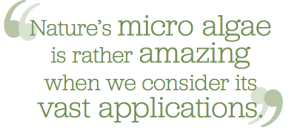Spring 2016
By Amber Keenoy, principal, LEED AP BD+C – AO Consulting
 Building’s appearances and materials have largely been the same for the last several decades. Unfortunately, design and construction practices during this time have been focused first on budget and then on sustainability. For exam- ple, many projects have started with the best intentions of being green, only to re-buff the idea based on general contractor or architect feedback: “Green is just too expensive.” And the cycle continues. Buildings utilize less durable, manmade products that oftentimes actually have a negative impact on their environments and its habitants.
Building’s appearances and materials have largely been the same for the last several decades. Unfortunately, design and construction practices during this time have been focused first on budget and then on sustainability. For exam- ple, many projects have started with the best intentions of being green, only to re-buff the idea based on general contractor or architect feedback: “Green is just too expensive.” And the cycle continues. Buildings utilize less durable, manmade products that oftentimes actually have a negative impact on their environments and its habitants.
So, how do we break the cycle, and what is the future of society’s buildings? Will they continue to be designed to last only 30 to 50 years with numerous lower-quality and toxic products? Or, will the tide finally begin to shift back to sustainability and inno- vation? Will being green ever be considered part of normal practice? Or, will it instead always have the stigma of being too expensive without addressing the grander scale of human environment, health and wellness?
Luckily, there are already some design teams and building owners that are attempting to buck tradition to create truly green spaces. And they’re finding innovative ways to do so.
Take the power of algae for instance. Nature’s micro algae is rather amazing when we consider its vast applications. When looking at algae, one might wonder just how far this green substance could go in, well, making things greener. There are now algaepowered lights, for example, that also eat CO2. At its core, algae obtains energy from photosynthesis. There are now street lights in France and Germany that are not only 100% powered by algae but also literally eat carbon dioxide from the environment. This effectively removes toxins from the air for us humans. And, if algae consumes carbon dioxide 200 times more effectively than trees, could this material be streamlined as a new building product? The Colt Group, Splitterwerk Architects and Arup think so.
 Together the groups have created a Bio Intelligent Quotient (BIQ) prototype building in Hamburg, Germany, that works entirely off the algae power concept. The building is surrounded by 0.78- inches-thick glass panels that cover approximately 2,200 square feet. The panels are filled with algae from the Elbe River, then pumped full of carbon dioxide and nutrients. When sunlight hits the 129 “bioreactors,” photosynthesis causes the microorganisms to multiply and give off heat. Warmth is then retained to heat water or stored in saline tanks underground. The algae biomass is then harvested and dried. The resulting bio-product can be converted to biogas, or used in secondary pharmaceutical or food products.
Together the groups have created a Bio Intelligent Quotient (BIQ) prototype building in Hamburg, Germany, that works entirely off the algae power concept. The building is surrounded by 0.78- inches-thick glass panels that cover approximately 2,200 square feet. The panels are filled with algae from the Elbe River, then pumped full of carbon dioxide and nutrients. When sunlight hits the 129 “bioreactors,” photosynthesis causes the microorganisms to multiply and give off heat. Warmth is then retained to heat water or stored in saline tanks underground. The algae biomass is then harvested and dried. The resulting bio-product can be converted to biogas, or used in secondary pharmaceutical or food products.
Sure, buildings like this set the bar high, but if the U.S. hospitality and retail segments are willing to embrace this kind of innovative approach, it could greatly benefit all of us. This sector includes buildings that represent some of the most social human gathering spots. If we can find ways to help them highlight human ingenuity, innovation and commitment to sustainability within the constraints of a budget, it would be a giant leap forward for not only our industry but more so people.
Just think, Las Vegas would be a wonderful hotspot for the development and installation of algae buildings. Can’t you see the green glowing glass light- ing up The Strip now?